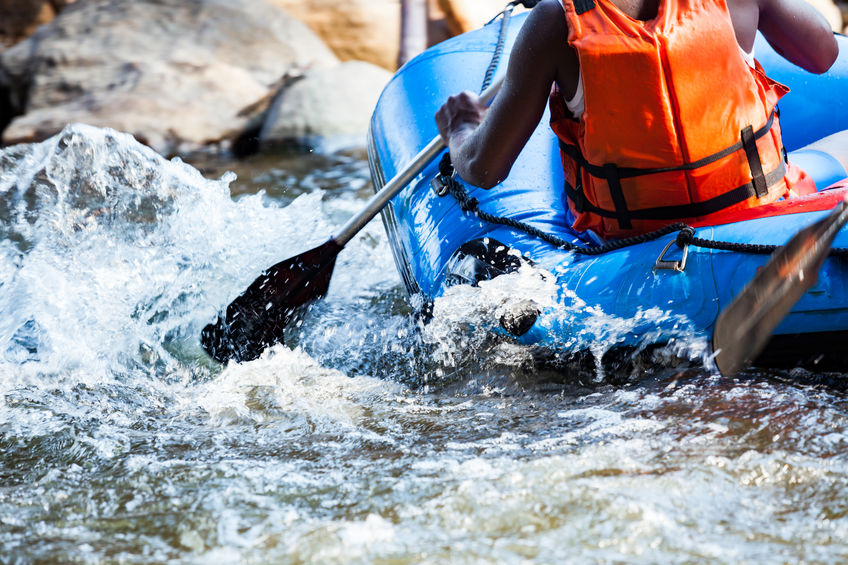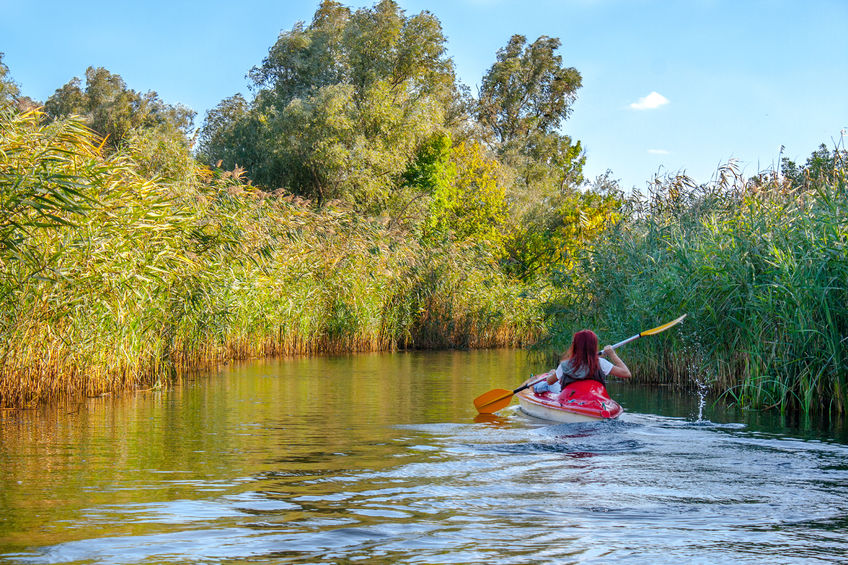 (Would you, could you believe that it’s supposed to be easy?) I just found a little note I wrote for myself with an Abraham-Hicks quote that struck me: “The path of least resistance is also the path of greatest joy, greatest clarity, and the most fun!” Abraham’s path of least resistance is a crazy-simple concept: You watch for and find the easiest, most effortless spot to next place your foot. Don’t see the whole picture? Don’t have a start-to-finish plan? No problem. Find your next step, knowing that’s enough. Take the easiest step you have access to. You can do it tired, scared, confused. Point yourself roughly in the right direction (as I talk about in part 4 of Scooch!) and step forward, wherever your foot can land without some big leap or forceful stomping. You can do it with curiosity instead of dread; you can stay tuned for the guidance rather than fear you’ll get it wrong. You can trust yourself to course-correct as you go. It’s always okay to find you’re in resistance. Watch it dispassionately, compassionately. Then find your point of least resistance, and step there. Rinse and repeat; rinse and repeat. You’ll see and feel the resistance melt away. You’ll find the momentum builds as you go, often surprisingly swiftly. To proceed along the path of least resistance, start by noticing when you’re in resistance. In your body, resistance can feel like
You’re in resistance when you're
It also helps to be clear about the signs that you're on a path of least resistance:
How to follow the path of least resistance: All you need to do is gingerly pick your way along the unknown way, one step at a time, simply finding your next point of least resistance. What’s the easiest way to go that feels like it’s in the right direction? Forget the whole picture. Don’t call this one step a drop in the bucket. Your point of least resistance simply gives you access to movement. One step, and another, and the next, until you’re moving so well, you forget you didn’t know how to do this. You’ll course-correct as you go, so don’t worry about whether you’re heading just the right way. You’re meant to build and ride momentum. Hey, it’s not just that the path of least resistance will get you to where you’re going in the most effortless way. Remember the quote I began with from Abraham-Hicks? “The path of least resistance is also the path of greatest joy, greatest clarity, and the most fun!” So when it feels like that … you’re on it! Love & blessings, Jaya Note that an earlier post on least resistance approaches these concepts from another angle.
0 Comments
Want to get on with it? Find your point of least resistance.
Hey, have you figured out yet that it’s just resistance when you keep putting off what you say you want to do or what you think you should be doing? It really helps to know it as resistance. It helps to call it resistance. Otherwise, you have to call it lazy or lame. You might get into self-scolding or even self-loathing. And I bet you know that’ll never get you where you want to go. In fact, judging your resistance is more likely to increase it. So what if, instead, you noticed the resistance and just got okay with it—human thing that it is, for human being that you are. What if you declared that you’re in no rush, you’ll get there in your own good time, and you’re simply going to head that way through your point of least resistance? Ah, then you get to actively enjoy the binge-watching (and notice when it’s not fun anymore, because enjoying it means it’s not fraught with shame or misery that keeps you stuck there). Or you get to appreciate prioritizing the easy task, and move swiftly and surely through the ease of the simpler, more obvious, more joyous thing that must also be done. As you feel good about working with ease, you get to increase feeling good in general. And from that place of feeling good, and having had some guiltless fun or checked off a to-do or two that cost you little, you might take a (satisfied, can-do) breath and go for the harder thing. Sound better? I’m giving you three examples to illustrate the point of least resistance, so check out the one or ones you’re most drawn to. Example #1 targets the Enneagram’s self-preservation instinct (self-prez to Enneagram geeks): getting yourself to the gym. Example #2 correlates with the sexual instinct: working up to leaving the relationship, or agonizing over the belief it’s really time to go (but you don’t or can’t). Example #3 addresses the social instinct: wanting to rev up your connections or grow your circles. After reading your preferred example(s), drop down to the subhead “More implications of the point of least resistance.” # 1: What if, instead of judging yourself for not getting to the gym, you welcomed yourself to the human race and considered how very many people struggle with how to work in working out? What if you stopped calling it lazy and instead took a look at the actual issue for you? This could lead you right to your point of least resistance. You might be inspired to get an accountability buddy, try a new modality that looks more fun or doable right now, or find a YouTube guide or a class. You might start simply walking or biking more to get from point A to point B. You might determine that a few good stretches could change how you feel in your body and start taking two-minute stretch breaks when that scrunched-up-at-the-desk sensation creeps in. So much is possible! But not when you get trapped in resistance, and not when you see a point of least resistance but don’t grab it because you treat it like an evil (or at least believe that you’re wimping out, not doing it right, not doing enough). # 2. What if, instead of forcing yourself to walk out of the relationship you suspect you’ve outgrown, or even forcing a stay-or-go decision, you located your point of least resistance? What if you gave yourself full permission to hang out there for a while and see what comes next? Your point of least resistance here could be about spending more time alone or with friends. It could involve making a pact (with your partner or yourself) to have fewer arguments (walk away at the first whiff!) and spend more time in appreciation or admiration, while putting aside stuff-to-work-out or what-to-do-next for a time. Or it could be working on passion and connection in every other realm of life while allowing, in the relationship realm, the relief of simplicity and neutrality (but not misery and criticism, at least on your end)—then you could see where that takes you. # 3. What if, instead of telling yourself you’re hopeless at the social thing (as you wish for more of it), you told yourself that growing your connections is a good intention to hold and play with? There’s already less resistance in that. Then you might consider what feels manageable and aims you roughly in the right direction without some great overhaul of either character or habits. It could be going out to eat alone, even with a book or device for starters, or going to the movies solo or with a friend or partner and appreciating that others are about, having a similar experience. Or you might join a class so that you have a repeating experience of gathering with a fixed population on a shared point of interest in shared space. Your point of least resistance might even be an online group! It might involve self-permission to join something in silence, allowing yourself to begin by focusing on your inner experience. It might be to find a buddy to do something you’ve never done or want to do more of (salsa or karate? wine tastings or vegan cooking? choral singing or meditation?)—something that happens to be done with or among other human beings. More implications of the point of least resistance You won’t grow your social, sexual, or self-prez self from a place of feeling like you’re perpetually off your game (or like it’s a game you’re not remotely equipped to play). But you can grow any one of those by stepping from one point of least resistance to the next, and just see what gives as you allow yourself to step onward, curious about what’s possible, open to what reveals itself. I cannot say enough about my love of the point of least resistance (and how much it’s helped my clients and program participants). It’s all about stepping in where it makes the most sense because it feels best and easiest and most aligned with where you are right now. This concept is super compatible with the idea of scooching (you may already know how much I love to Scooch!). The point of least resistance came to me through Abraham-Hicks, who teaches that it’s also your point of greatest alignment, most fun, and greatest joy. I keep playing with it and loving the experience and results. It’s so much kinder than all the forcing and straining or the judging and shutting down. I invite you to it (and you can learn about it in my beautiful and now beautifully cleaned-up and polished Expansion audio program). Love and Blessings, Jaya Note that my post Force Nothing adds to the ideas presented here on least resistance. Here's a sane, peaceful, trusting alternative to doership.
The idea of doership, or being the doer, is that you’re the one making things happen or getting things done—and when you’re in doership, you’re in illusion (uh, not to mention stress). You’re also prone to getting intense about how things go, in what timing, and with what outcome. Here’s a great sentence from an online dictionary explaining doership: “If there is no feeling of doership in the deed performed, then bondage will not result.” How do you get out of doership? (If you’re skimming or in get-in-get-out mode, drop down to bullet points below for sound things to tell yourself when you catch yourself being the doer.) First, simply notice when you’re believing you’re the one who makes it happen, or you have to get it done, or if you don’t do this, no one else will or it won’t get done right or all hell will break loose. Notice when you’re doing a task or moving from point A to point B between tasks in a way that’s tense, driven, anxious, frenetic. Notice the lack of peace [substitute ease, equanimity, joy, connection to magic] in do-do-do-do-do. Stop. If you can’t take a pause, then follow the next instructions while you’re carrying on with whatever you must do. Tune in to your breath and watch it go in and out. Follow the passage of the breath, right on its heels, experiencing exactly where it is in your body at any given moment. Feel the inevitable pause once the out-breath is spent. Come back to the core of yourself, back to center, by following the breath. This will also instantly serve to calm you, even a bit, and to elongate the breath—with no actual effort to do that. Just watch the breath—don’t slow it down; it will slow down on its own. Now find where you’re believing you’re the one who makes it happen. Notice you think you have to make it happen. Notice you’re believing that your doing is why you’re here, or your most important assignment, or at the very least what you must do right now. Consider the possibility that you’re in illusion. Tell yourself clearly, explicitly: I’m in doership right now, so I must be in illusion. Next tell yourself a number of things you can actually believe to counter this thought that you have to make it happen. I’ll list a bunch of possibilities, and you can adopt those that resonate and come up with more on your own. The point is to counter this potent belief with a good number of other things that you can also believe and that are closer to truth:
If any of that leaves you feeling more relaxed and more expansive, you’re on the right track. Use the contractions you feel to call you to a pause for breath and mental reset. On the physical level, notice clenched muscles, furrowed brow, frenetic motions—even irritated or bossy tones of voice. Catch yourself (kindly, without judgment) in needless intensity and tension. Come back to the breath, back to what’s truer and more aligned than forcing your way through as the doer. You really do get to live in alignment and flow—and you’ll function more effectively and even more efficiently when you’re there. Beyond doership is a great exhale and opening to magic! Note that part of living in everyday magic includes aligning with flow, connecting to your guidance system, living in the now. Show up for the journey, now and now and now, because that’s where the magic reveals itself. Love & blessings, Jaya |
Categories
All
|




 RSS Feed
RSS Feed